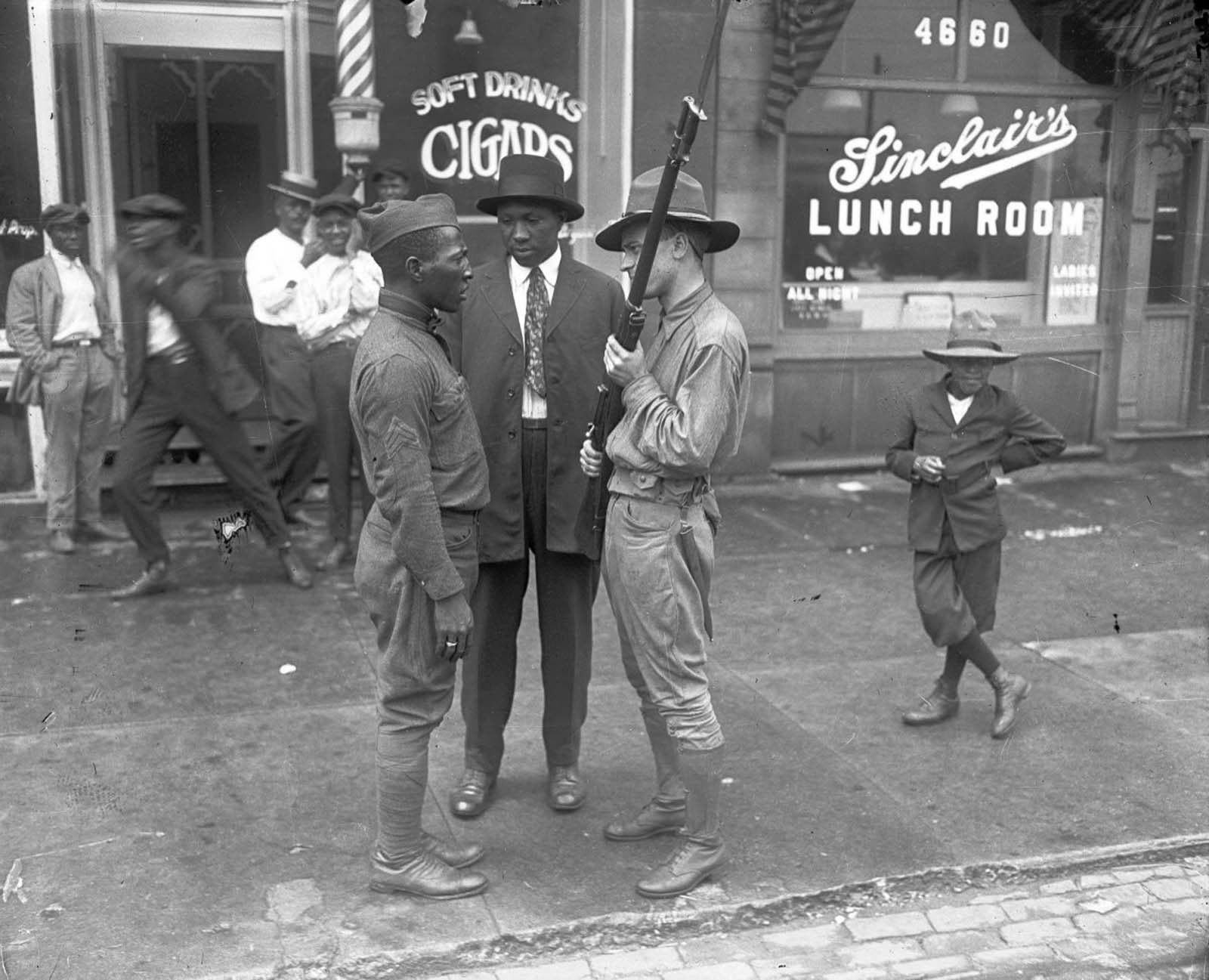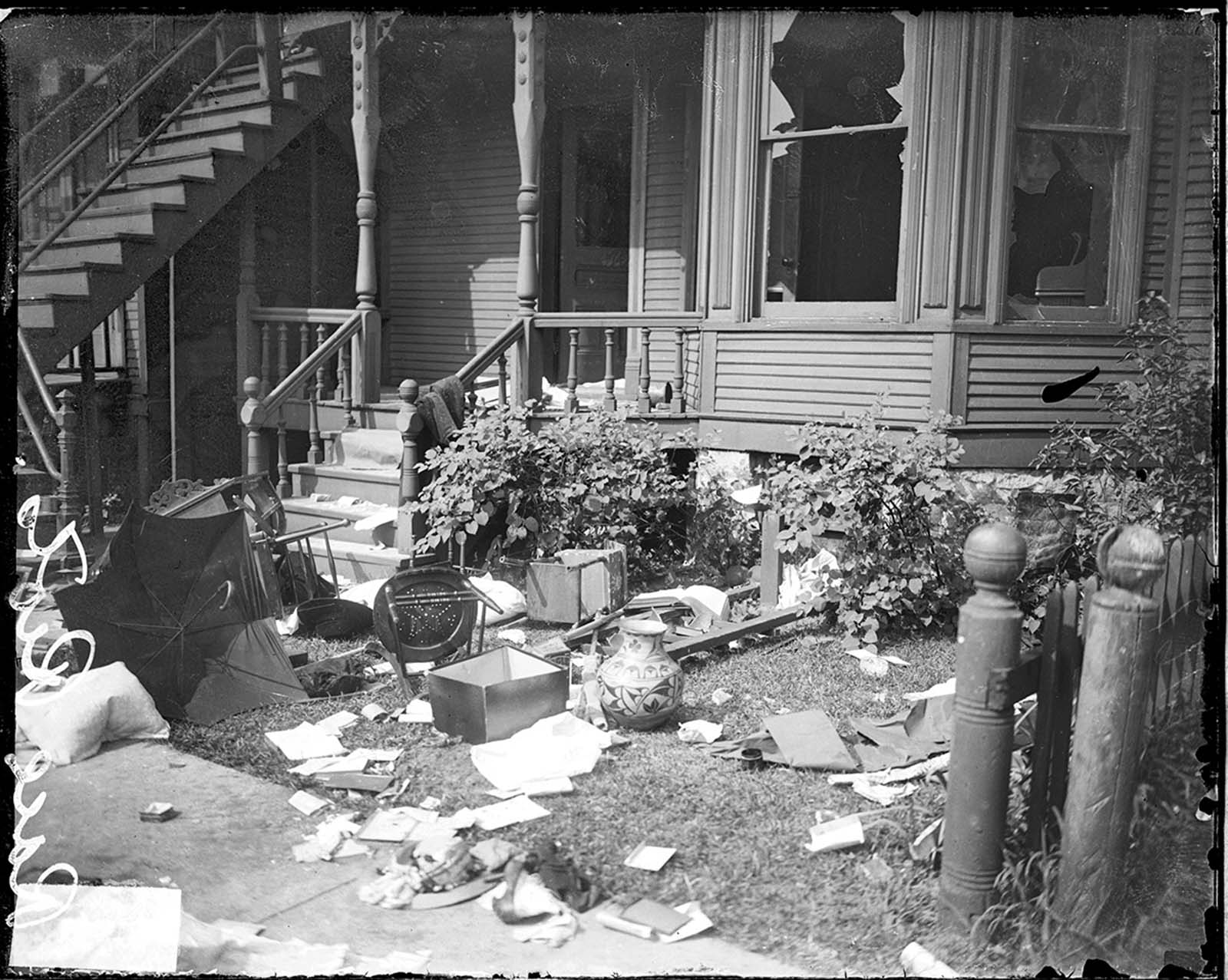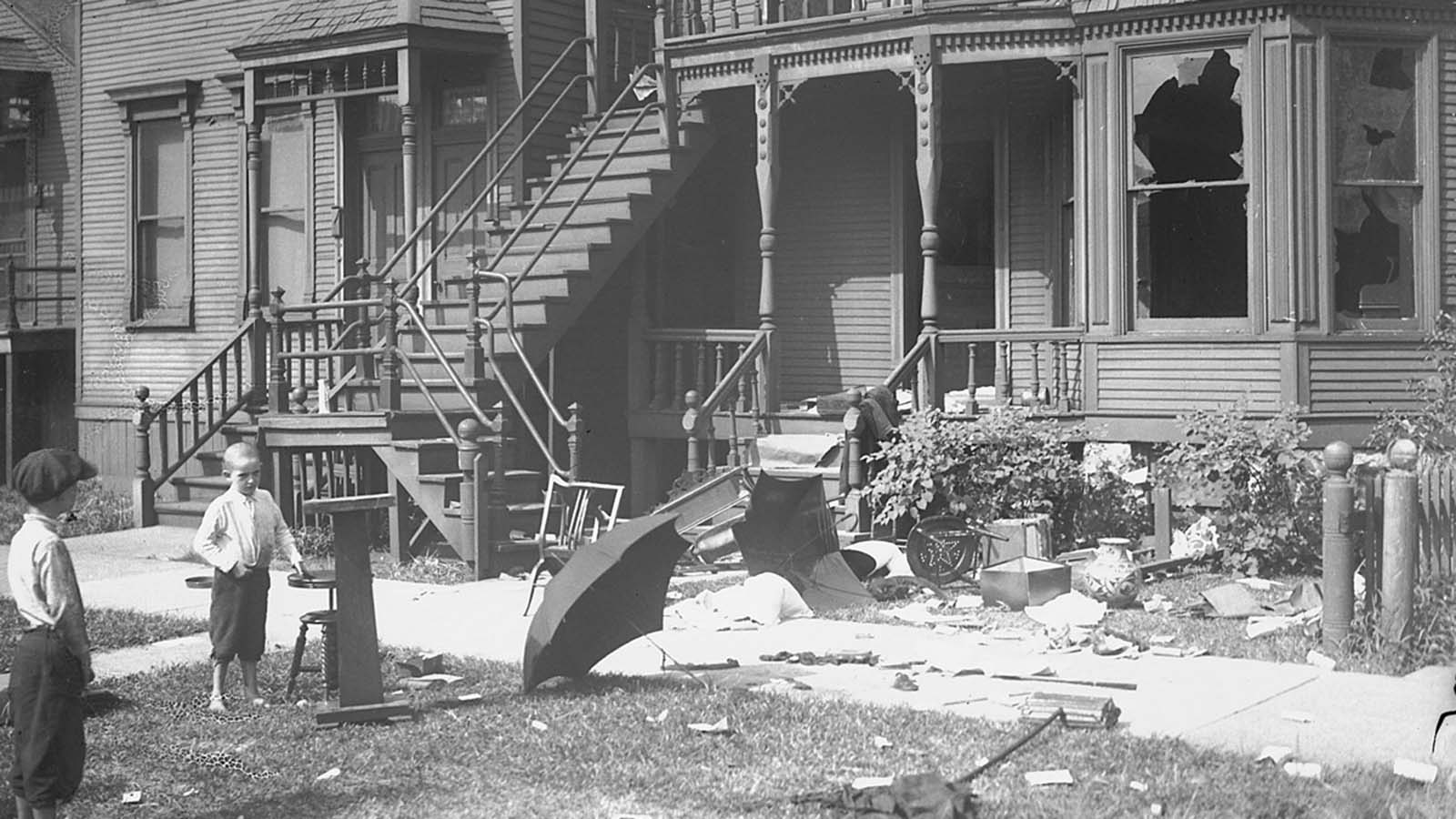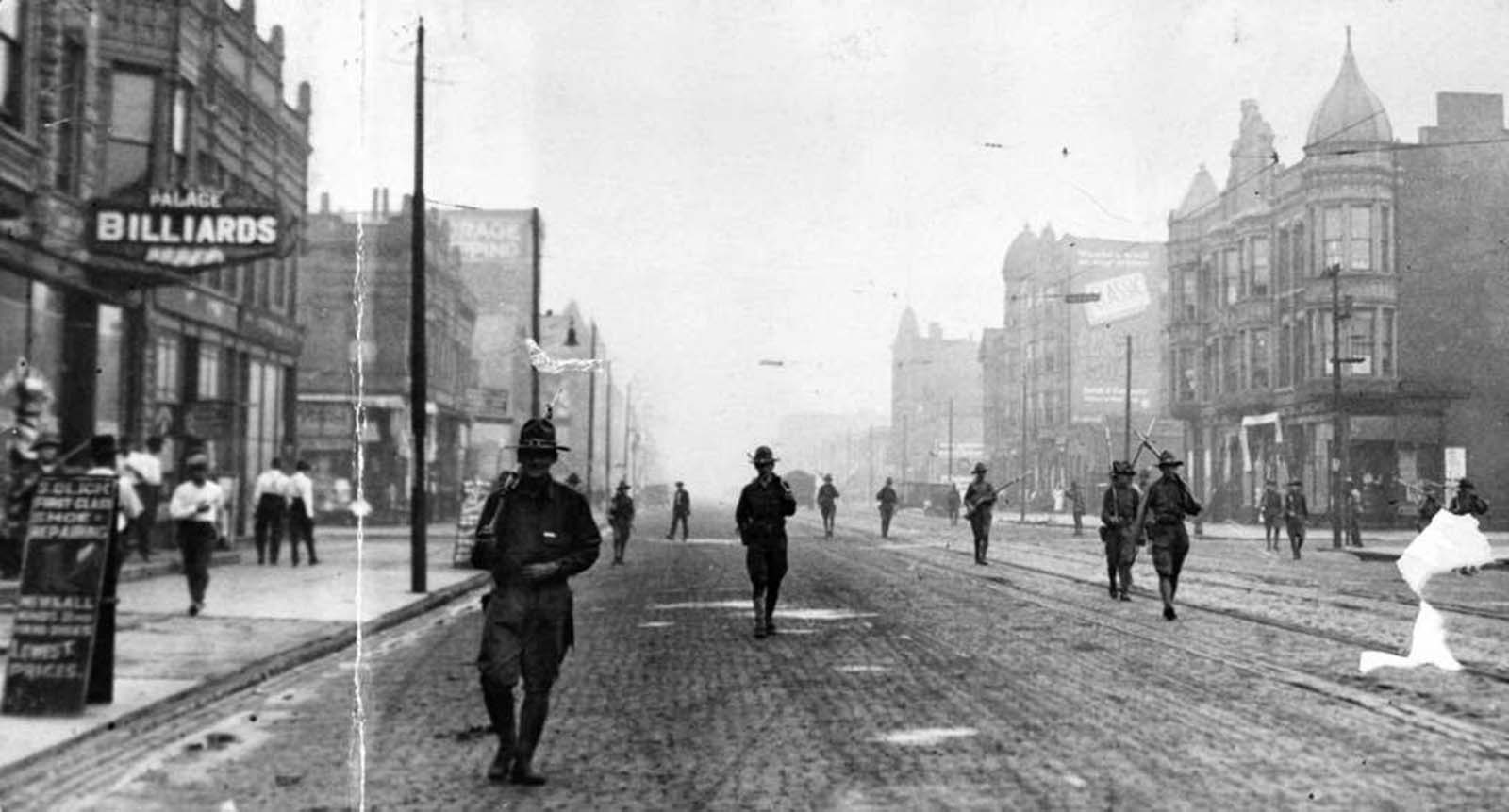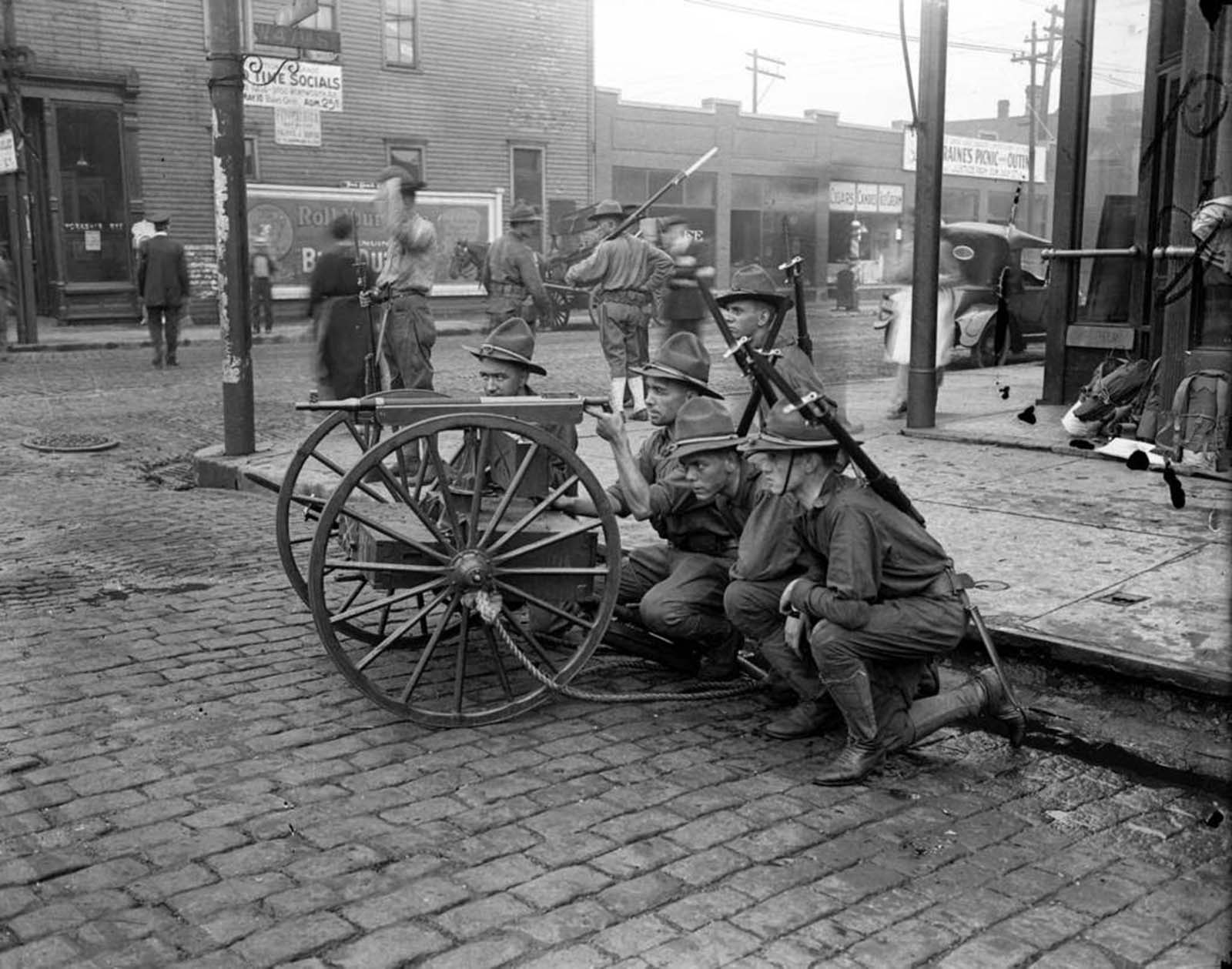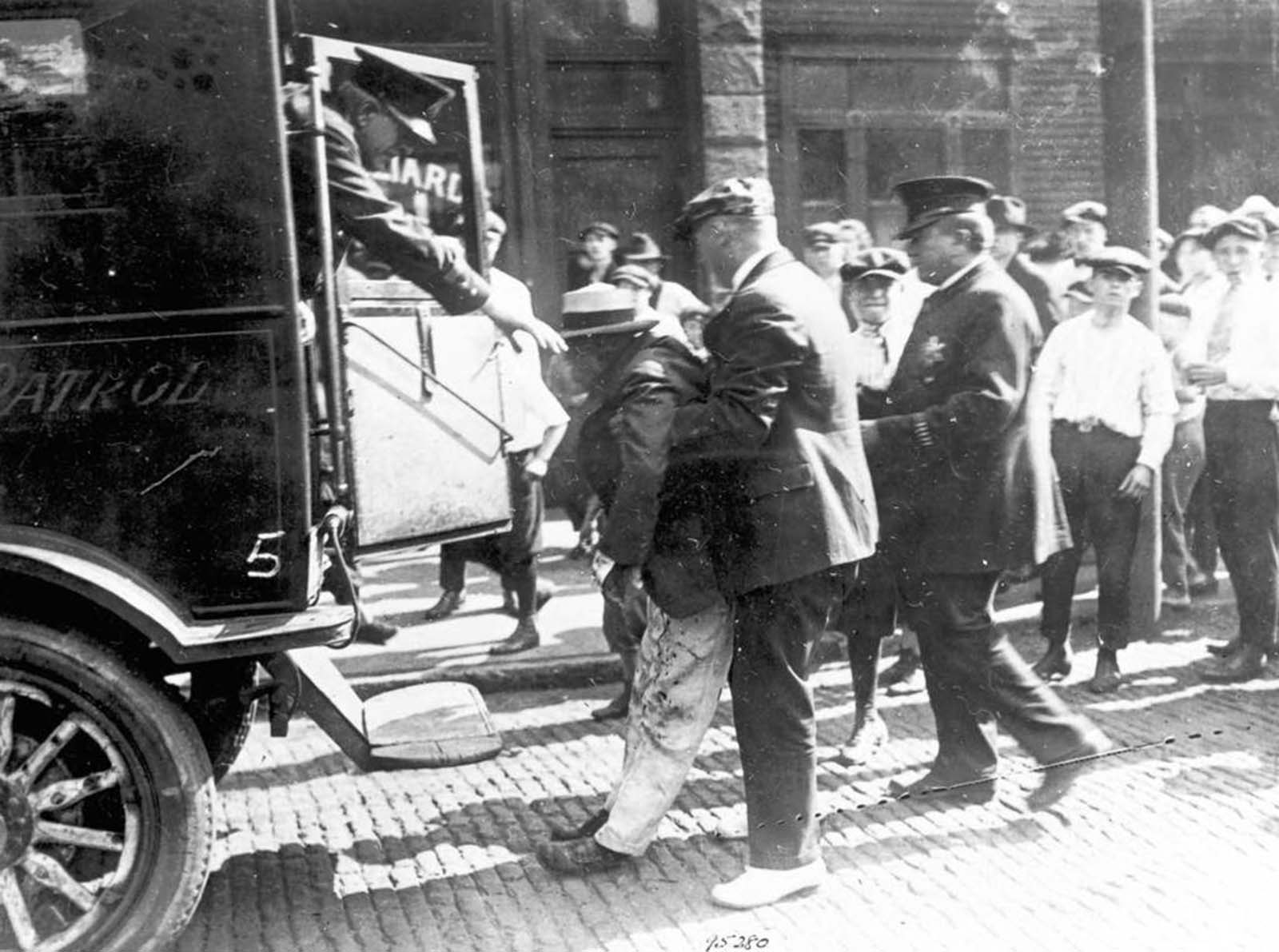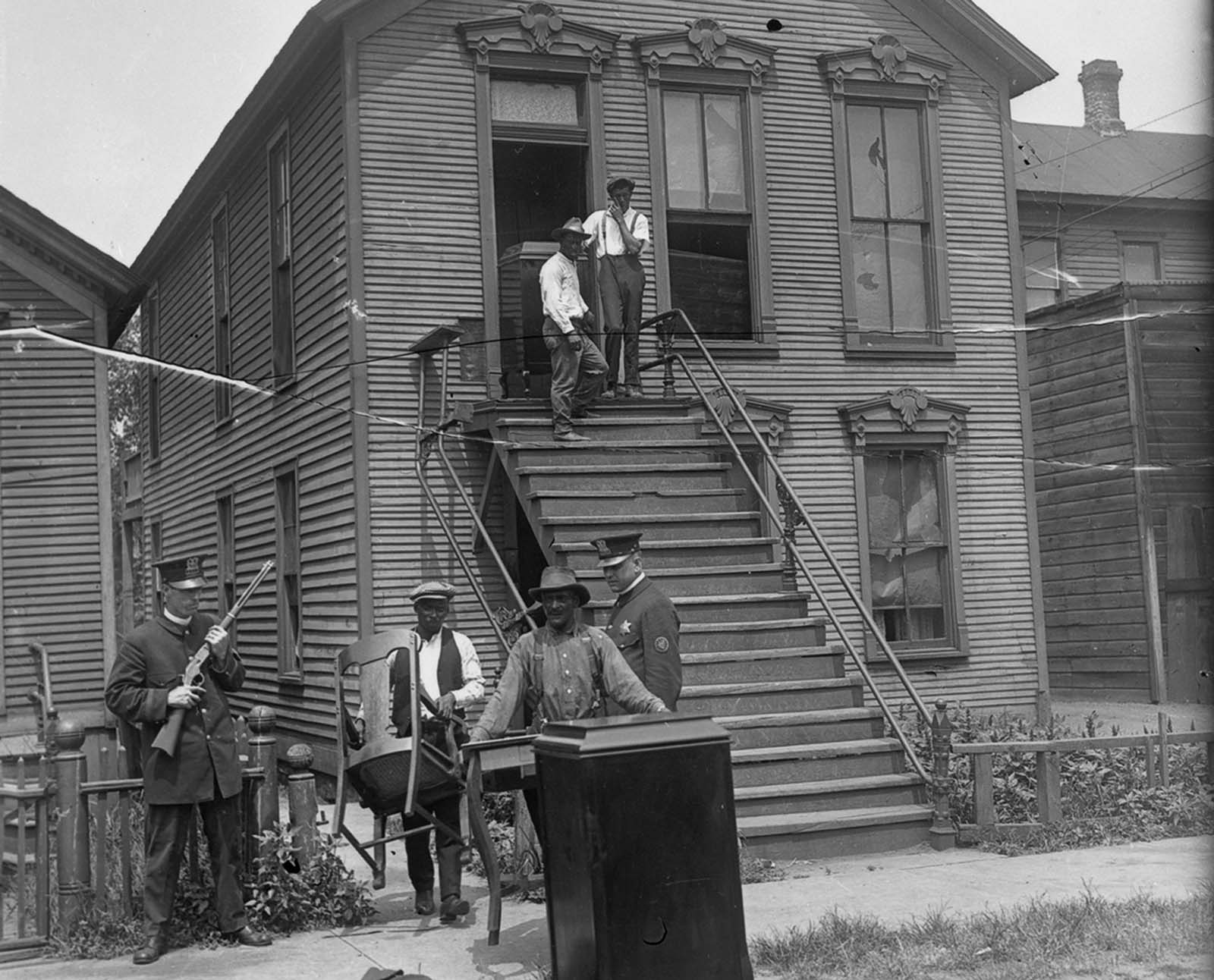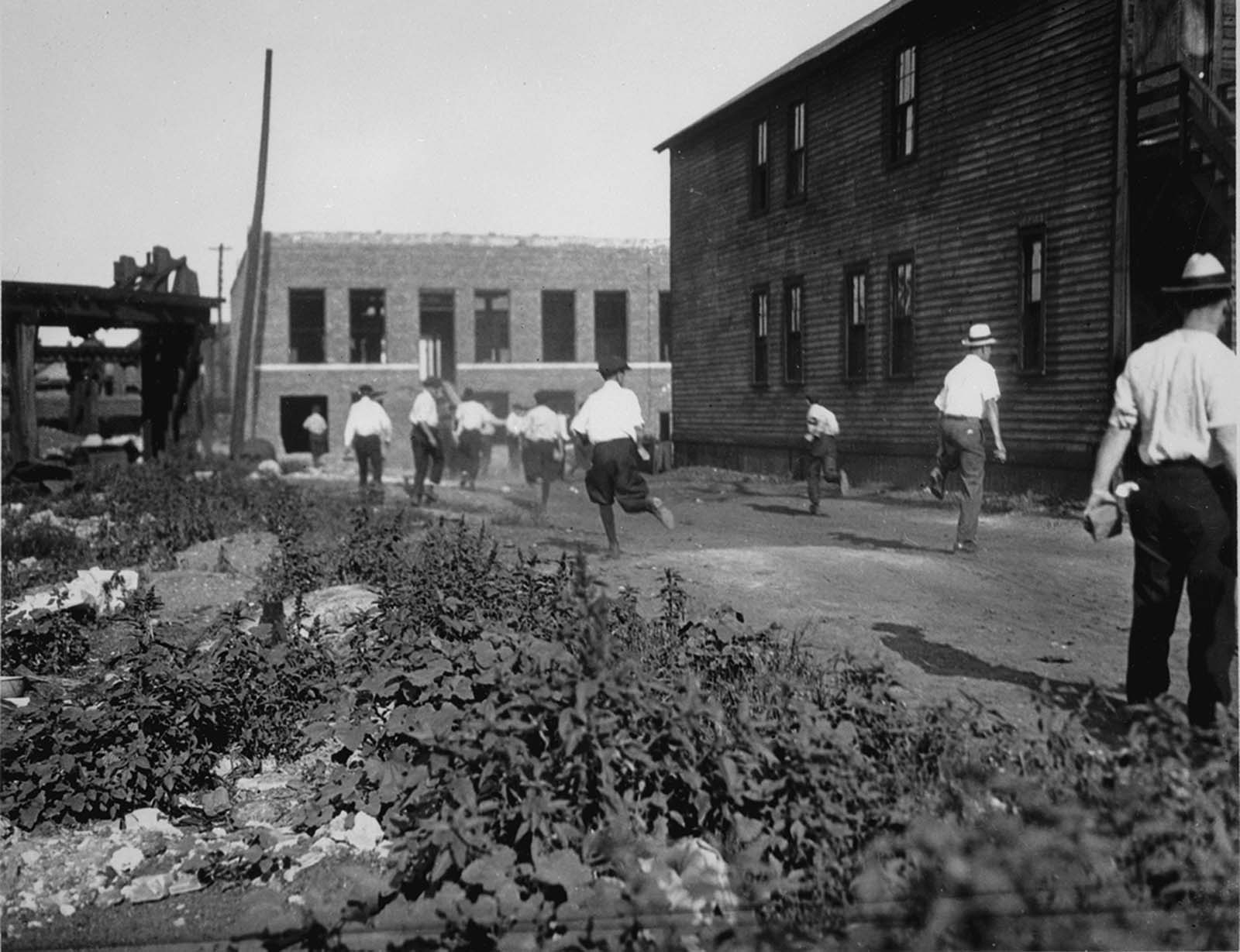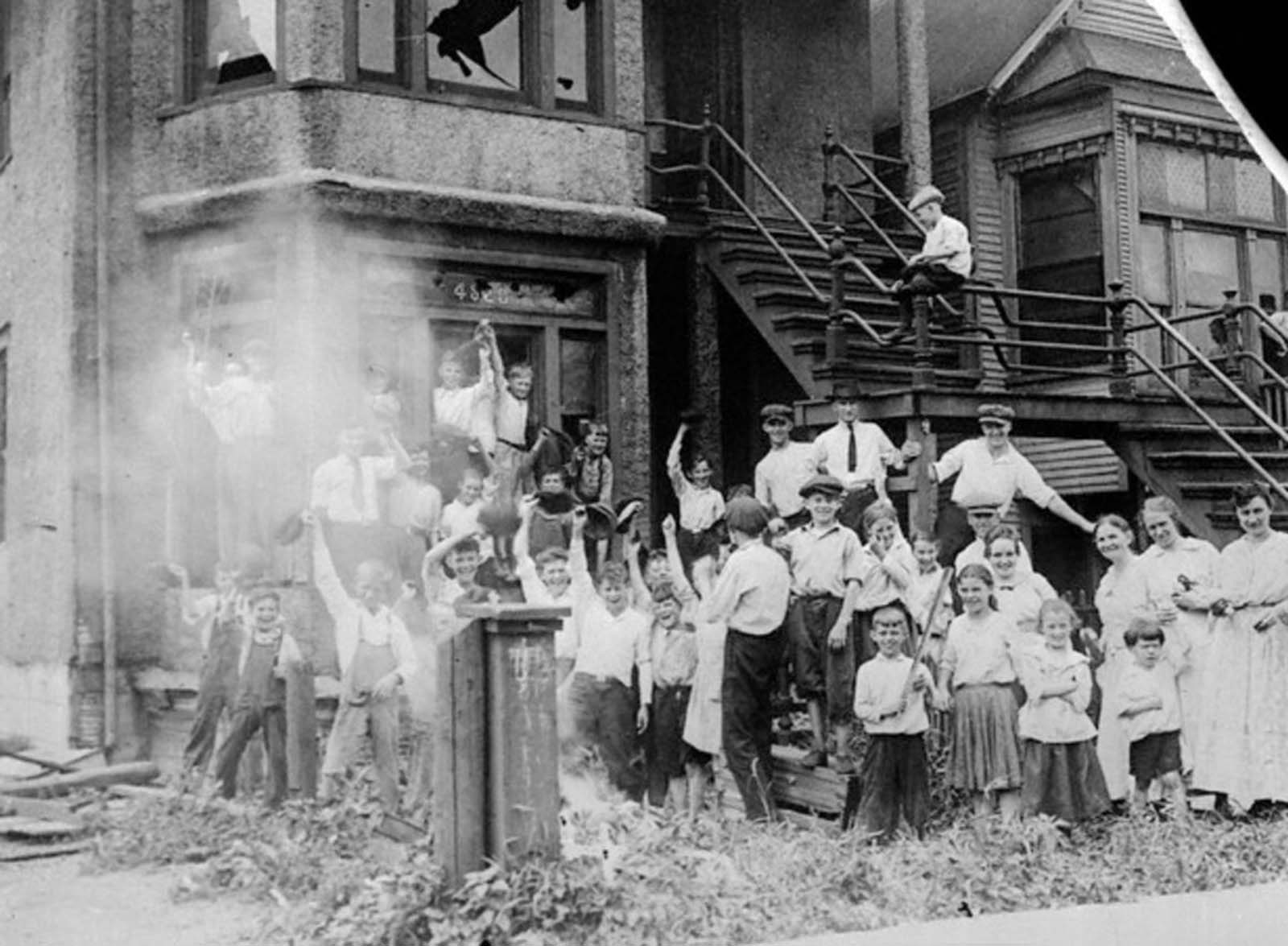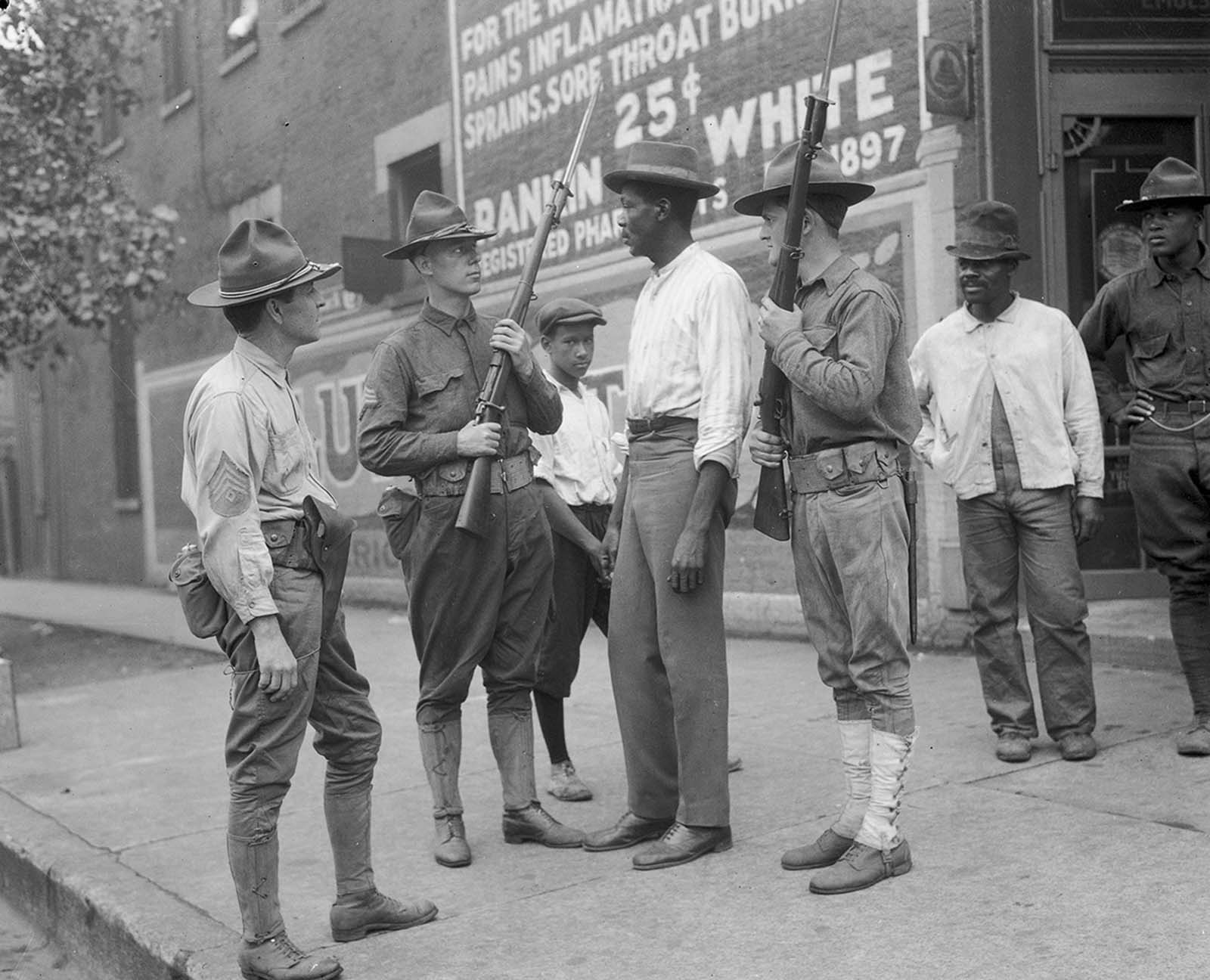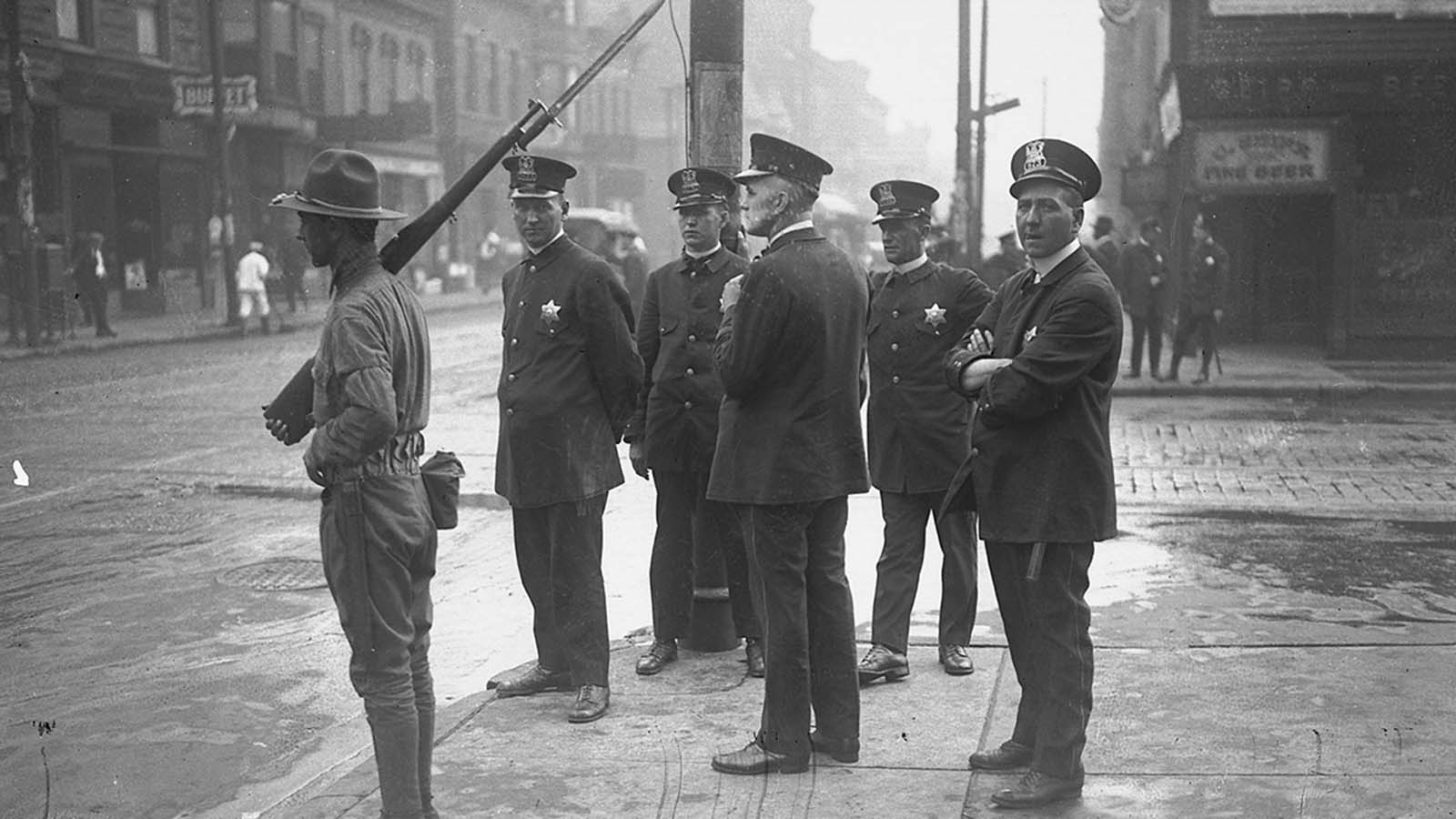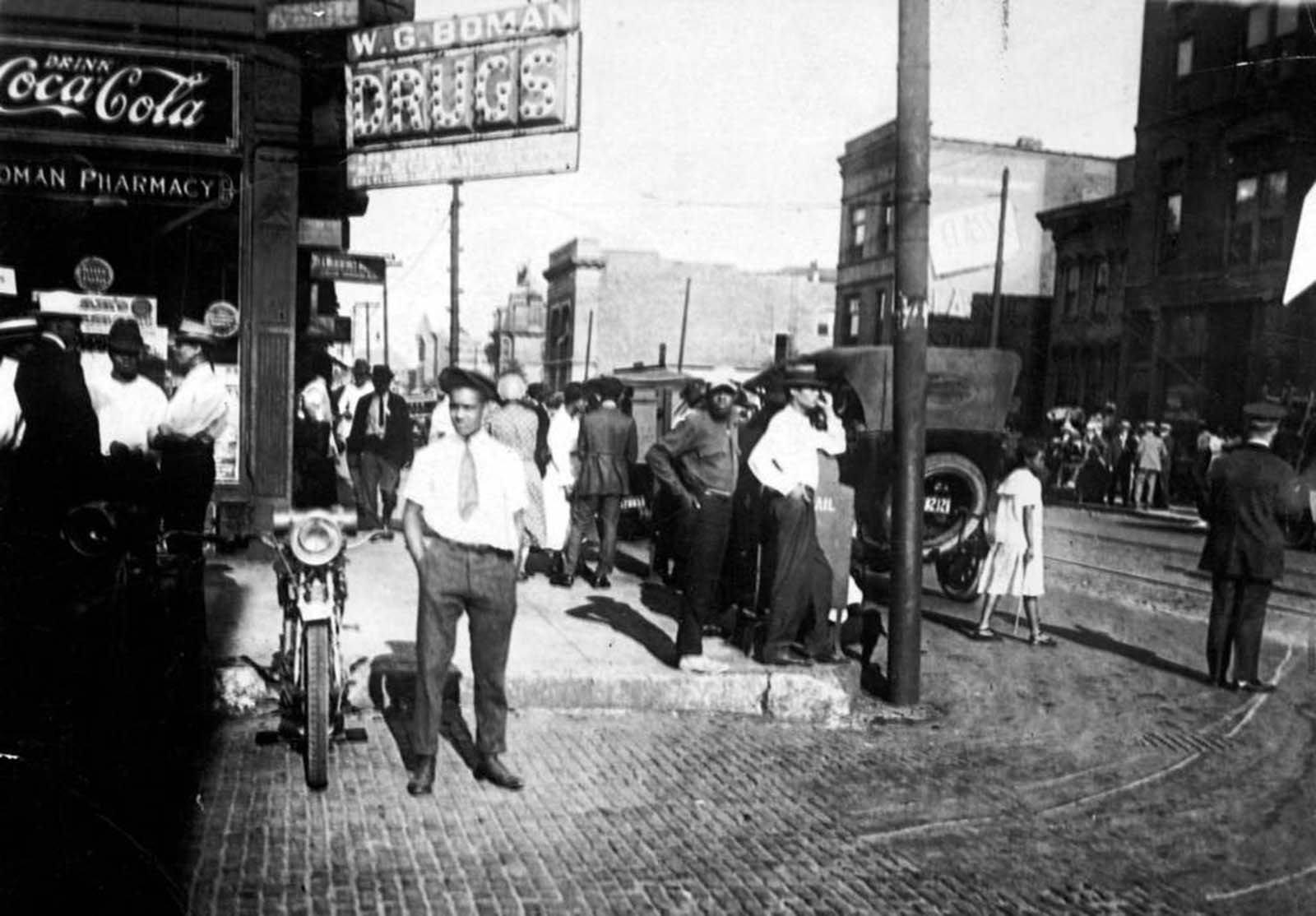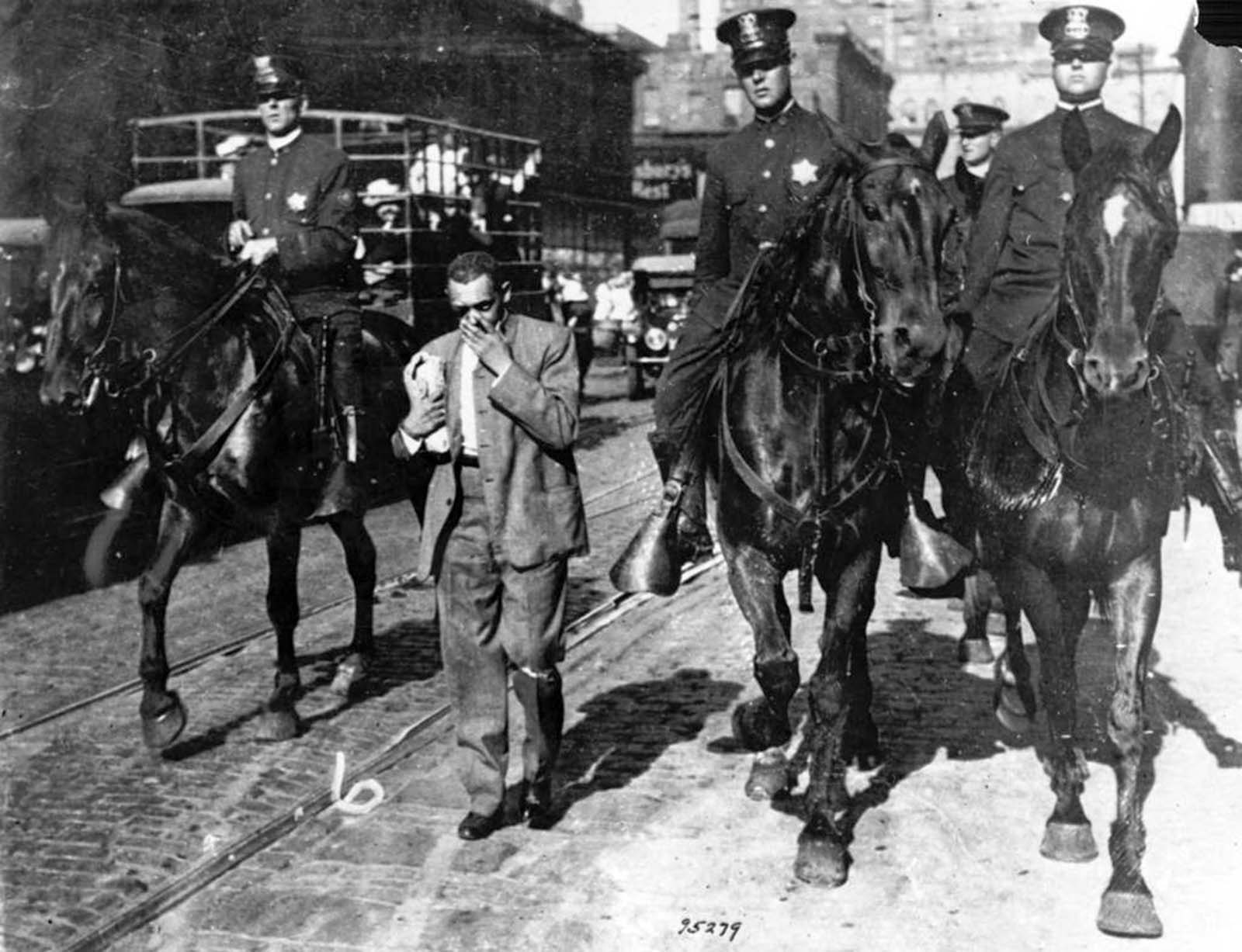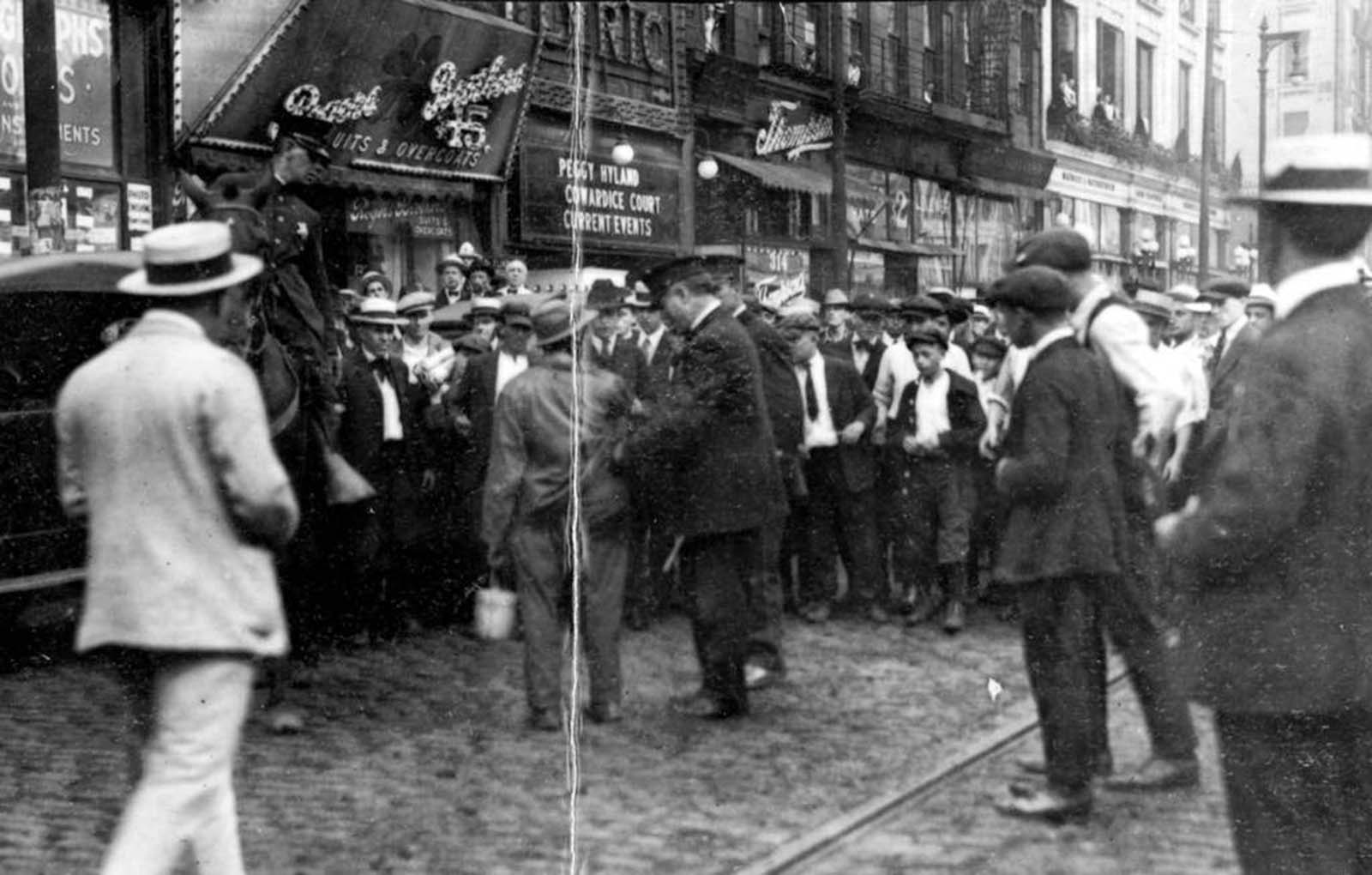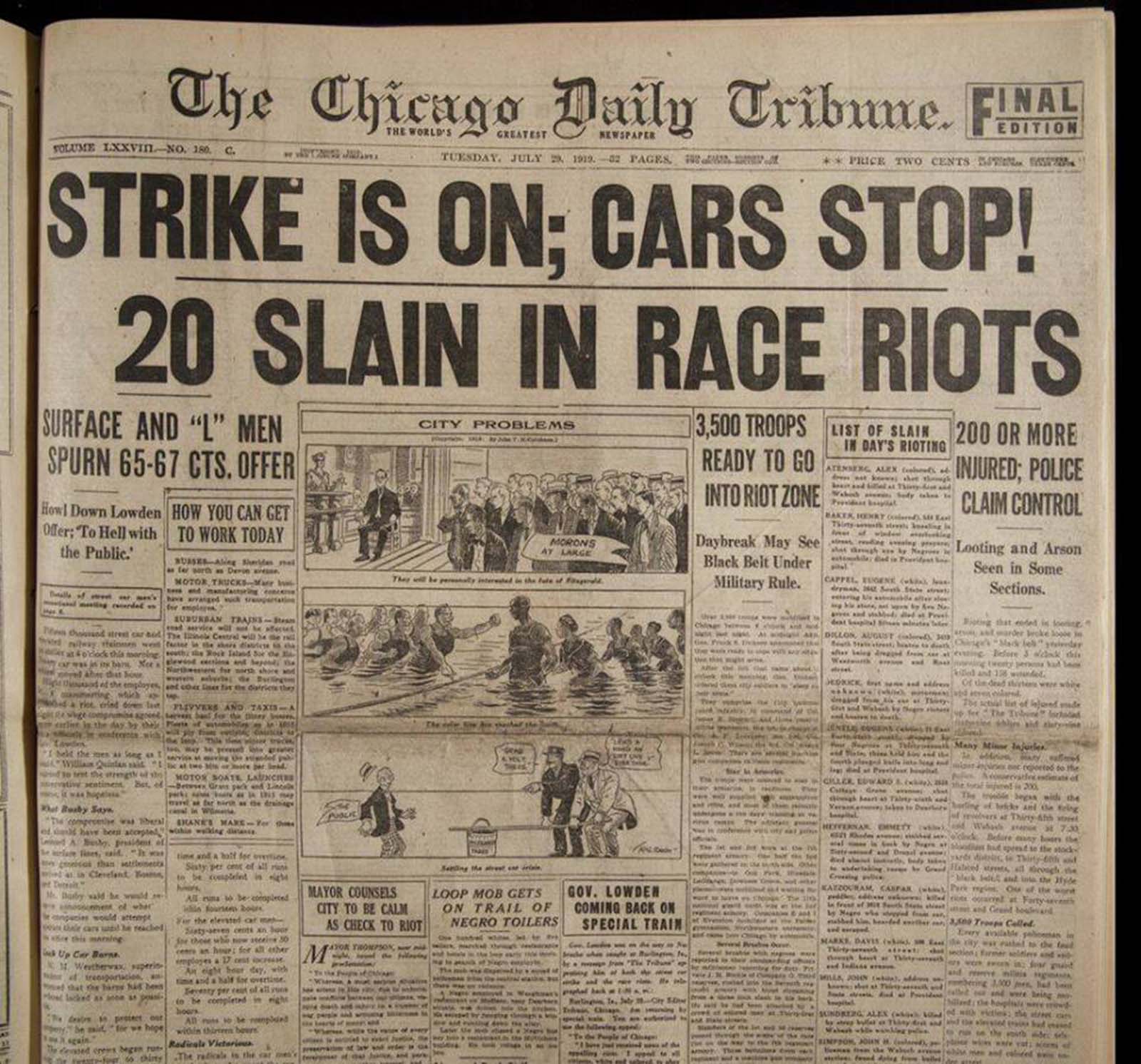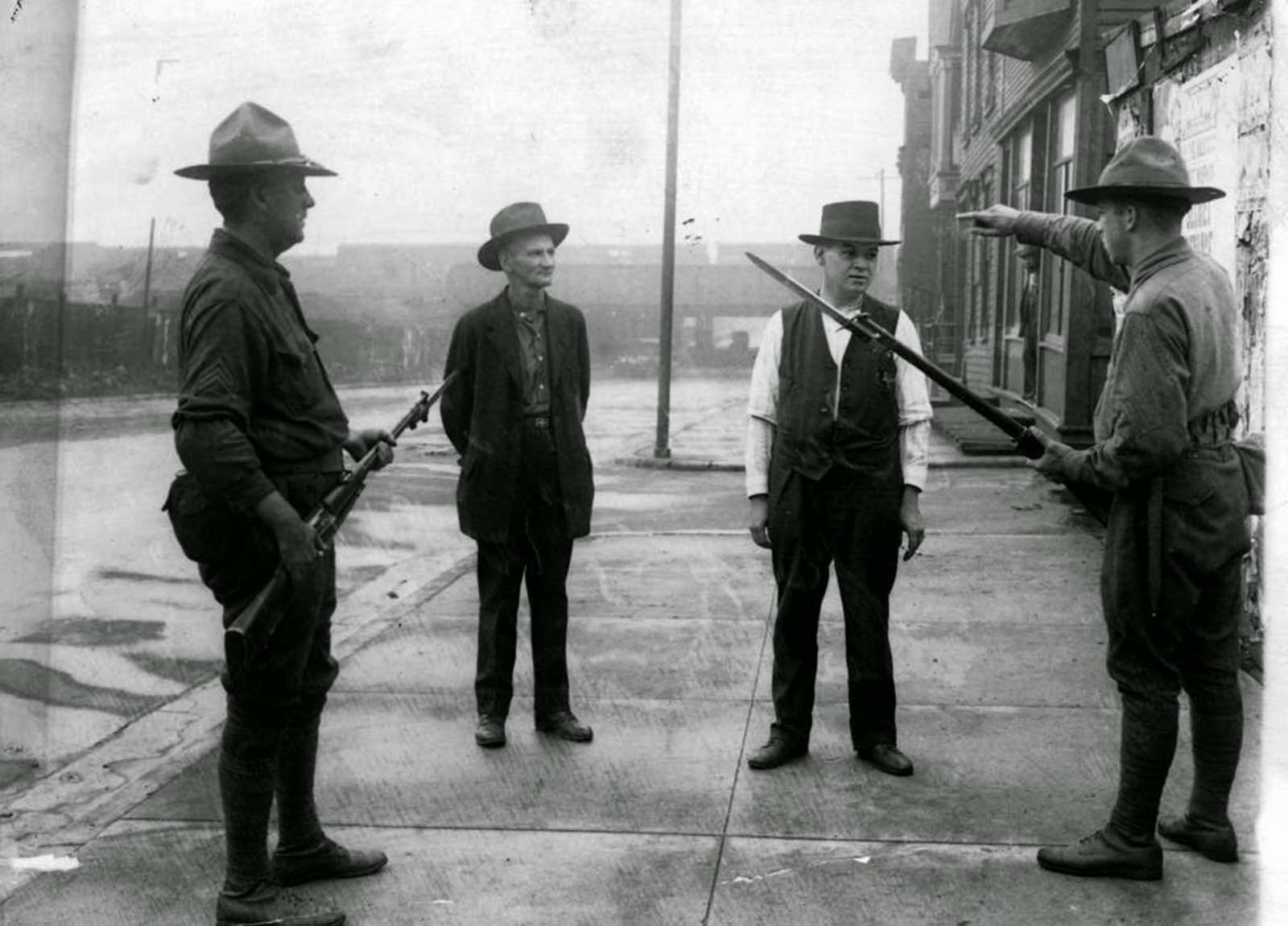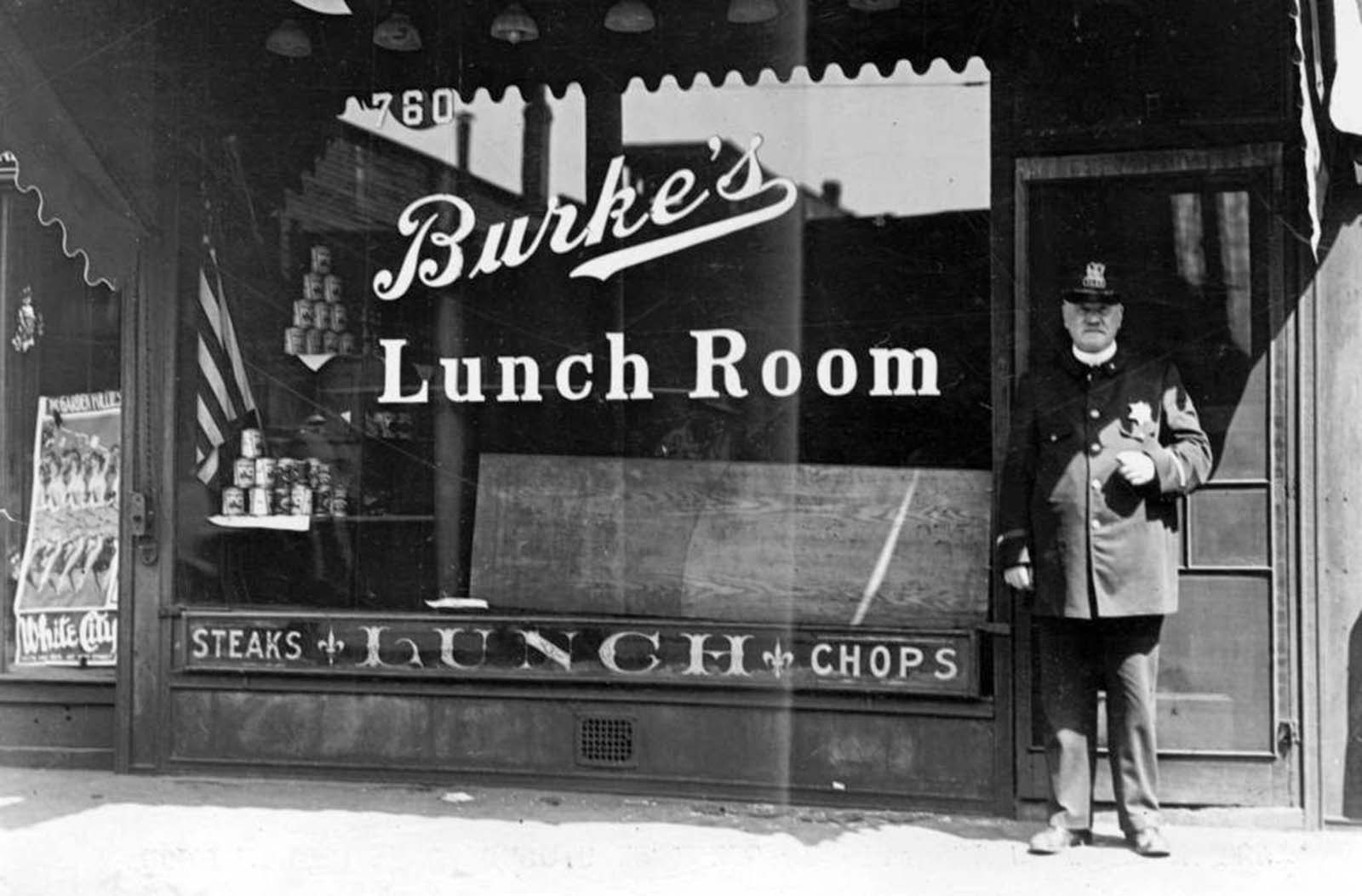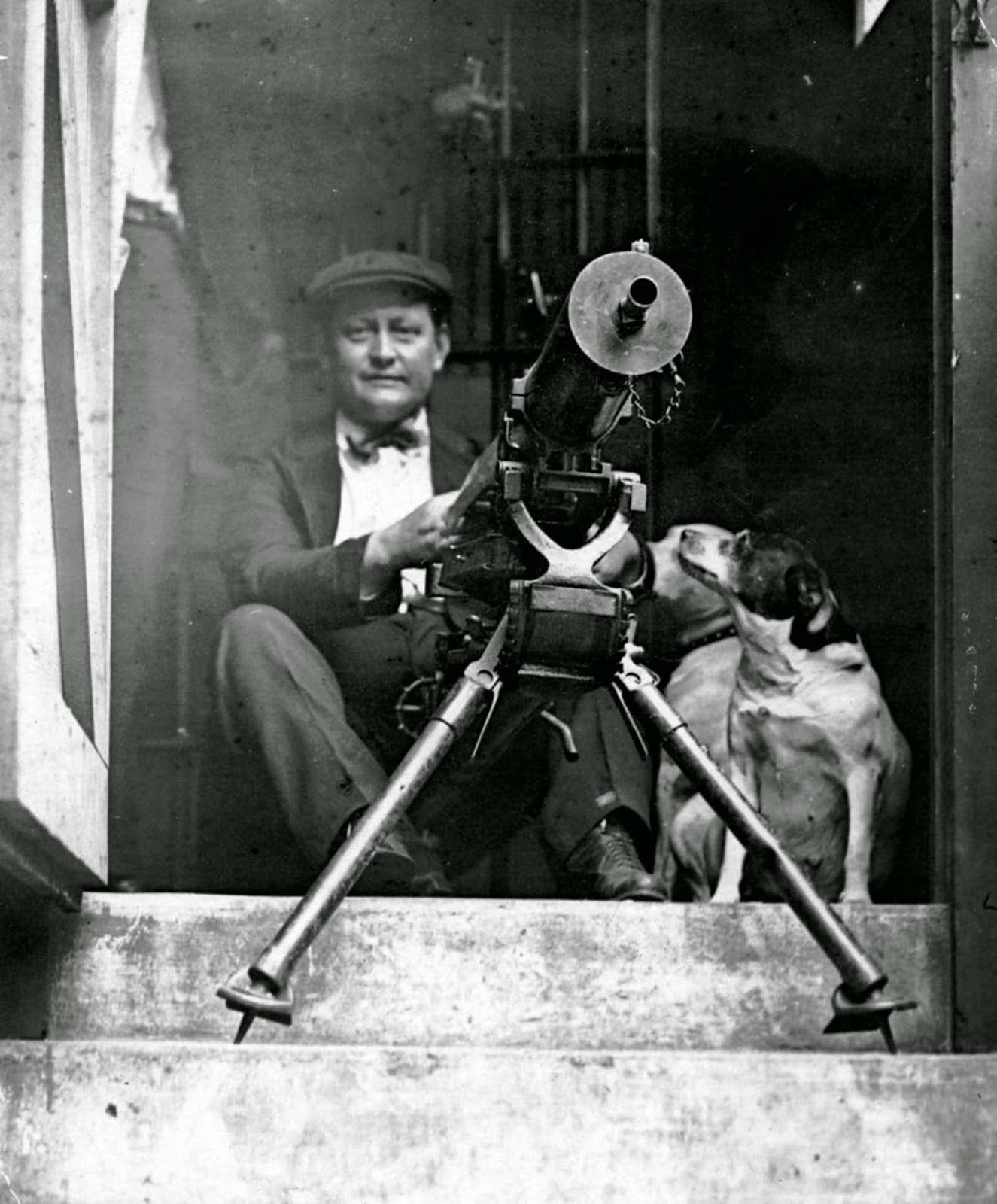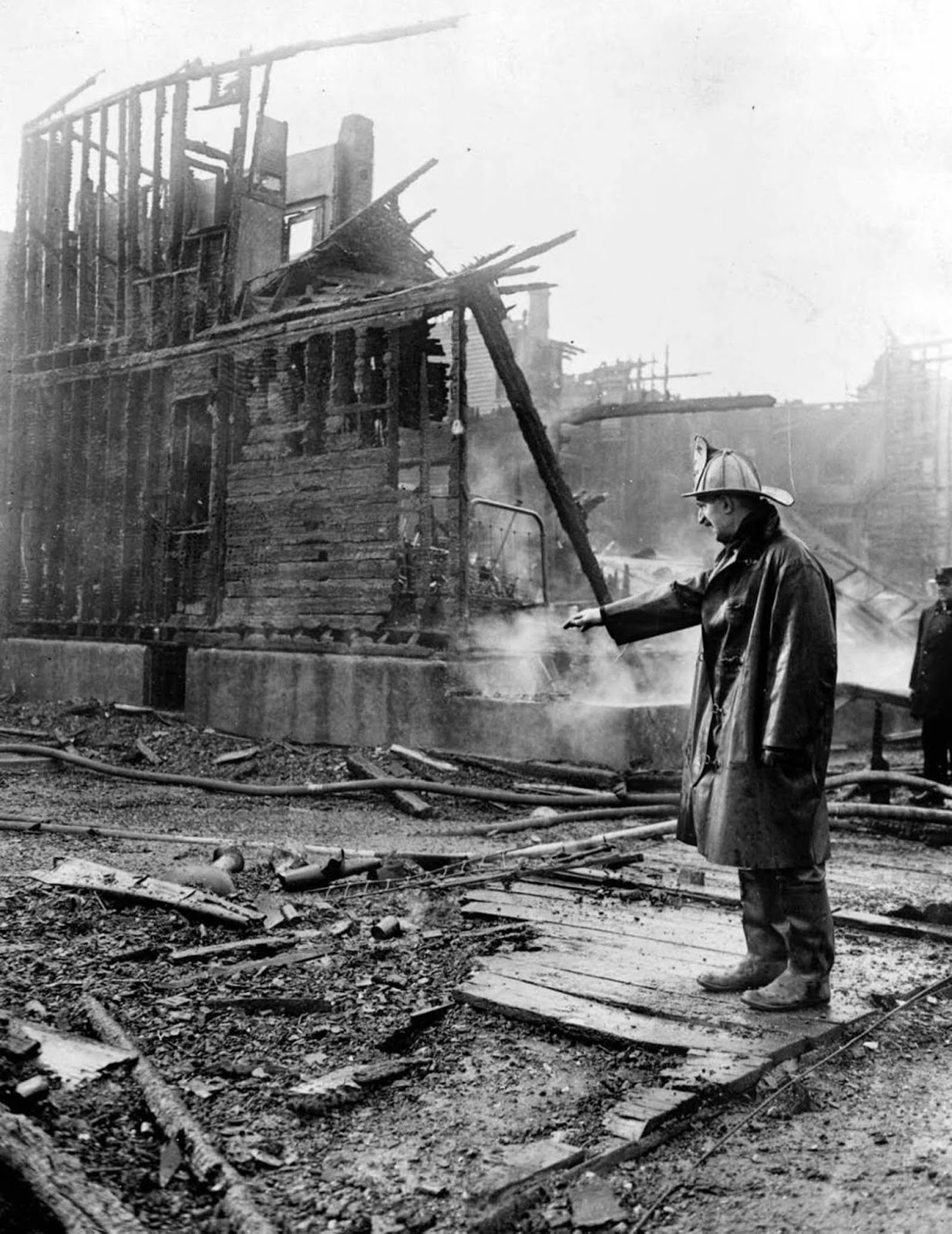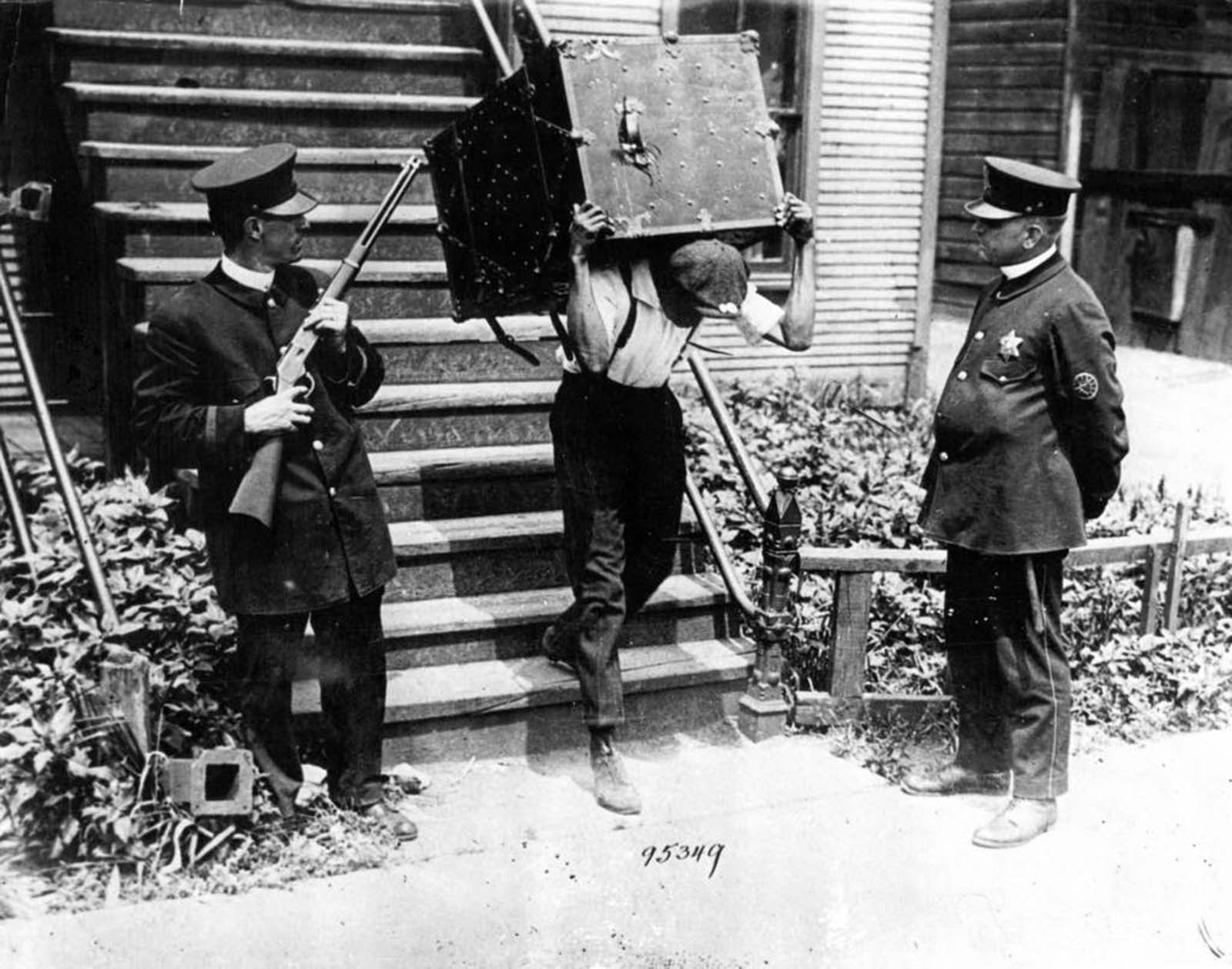Eugene, who was on a raft, inadvertently drifted over the invisible line that separated the black and white sections of the 29th St Beach. One white beachgoer, insulted, began throwing rocks at the black kids. Eugene Williams slipped off his raft and drowned. The murder and the subsequent refusal by the police to arrest the person initially responsible ignited a race riot that would go down in history as one of the country’s bloodiest, and least-known, to date. When the riot ended on August 3, 23 African-Americans had died along with 15 whites and more than 500 injured. Over 1,000 black families lost their homes after being set alight by the rioters. In early 1919, the sociopolitical atmosphere of Chicago around and near its rapidly growing black community was one of ethnic tension caused by competition among new groups, an economic slump, and the social changes engendered by World War I. With the Great Migration, thousands of African Americans from the American South had settled next to neighborhoods of European immigrants on Chicago’s South Side, near jobs in the stockyards, meatpacking plants, and industry. Meanwhile, the Irish had been established earlier, and fiercely defended their territory and political power against all newcomers. Post-World War I tensions caused inter-community frictions, especially in the competitive labor and housing markets. Overcrowding and increased African American resistance against racism, especially by war veterans contributed to the visible racial frictions. Also, a combination of ethnic gangs and police neglect strained the racial relationships. An interracial official city commission was convened to investigate causes and issued a report that urged an end to prejudice and discrimination. United States President Woodrow Wilson and the United States Congress attempted to promote legislation and organizations to decrease racial discord in America. Governor Lowden took several actions at Thompson’s request to quell the riot and promote greater harmony in its aftermath. Sections of the Chicago economy were shut down for several days during and after the riots since plants were closed to avoid interaction among bickering groups. Mayor Thompson drew on his association with this riot to influence later political elections. Even so, one of the more lasting effects may have been decisions in both white and black communities to seek greater separation from each other (Photo credit: Library of Congress). Notify me of new posts by email.
Δ Subscribe
